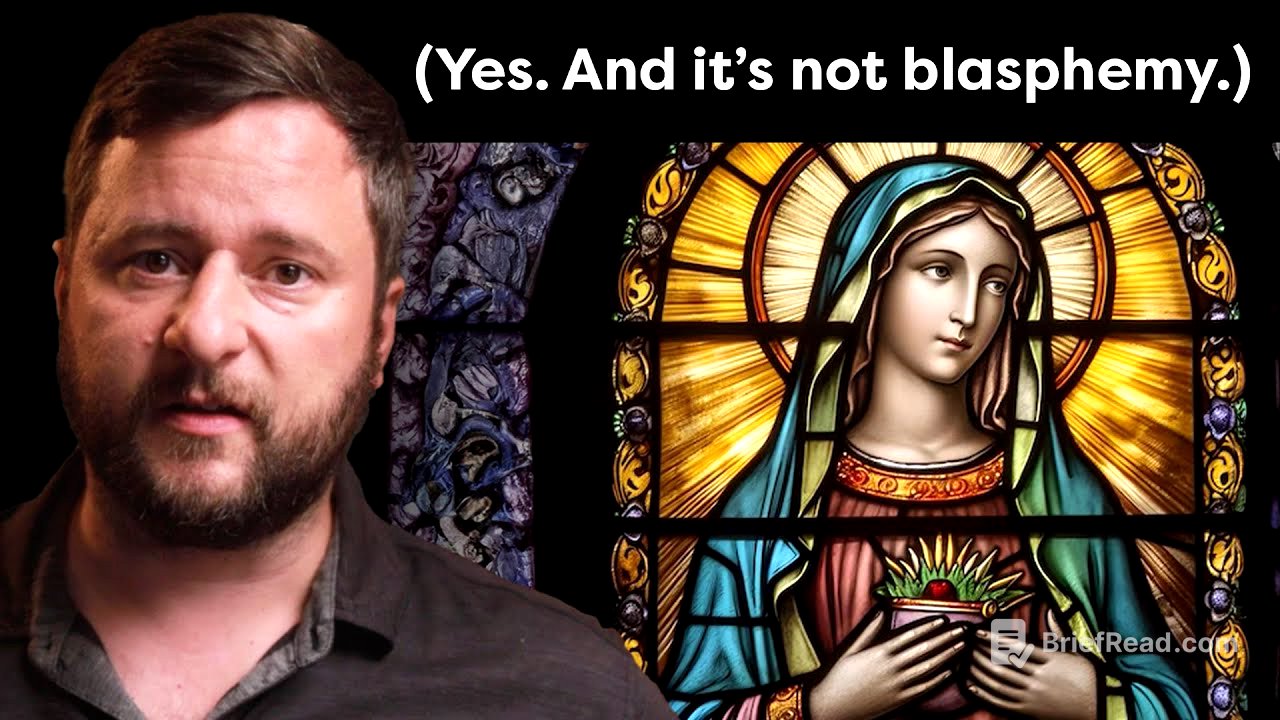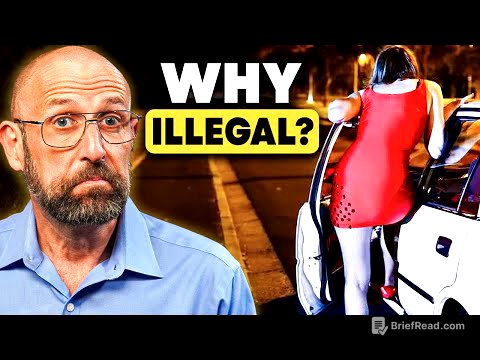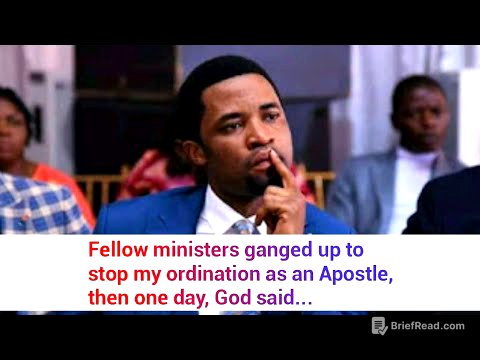TLDR;
This video addresses the common Protestant objection to Catholics saying that people other than Jesus can "save" us, particularly Mary. It clarifies that Catholics fully acknowledge Jesus Christ's unique role as the ultimate saviour. The video uses biblical passages to demonstrate that the Bible supports the idea that individuals can participate in the salvation of others by leading them to Christ. It applies this concept to Mary, explaining her unique role in salvation through her "yes" to the Incarnation and her continued intercession.
- Jesus Christ is the unique saviour, and no one else can replace him.
- The Bible supports the idea that individuals can participate in the salvation of others.
- Mary plays a unique role in salvation through her "yes" to the Incarnation and her continued intercession.
Introduction: Addressing Protestant Objections to Catholic Views on Salvation [0:00]
The video begins by recounting an experience where the speaker's Protestant friends expressed discomfort with the idea that someone other than Jesus could "save" a person. This stems from the Protestant belief that salvation comes through Jesus Christ alone, and any suggestion that another person can save is considered blasphemous. The video aims to address this objection by exploring the Catholic perspective on salvation, particularly concerning the role of Mary.
Clarifying the Centrality of Jesus Christ in Salvation [2:25]
The video emphasises the utter centrality of Jesus Christ in salvation. It references Acts 4:12, which states that salvation is found in no one else but Jesus. The speaker also cites 1 John 4, highlighting that Jesus is the expiation for our sins. The Catechism of the Catholic Church is quoted to reinforce that Christ's death is the definitive redemption of mankind. It is stressed that Jesus Christ uniquely pours out his blood for us, and no one else, not even martyrs, can die for us in the same way.
Biblical Support for the Idea That We Can Save Others [6:11]
The video presents biblical passages that support the idea that we can save other people. James 5:14-16 discusses how the prayer of faith can save the sick and lead to forgiveness of sins. James 5:19-20 states that bringing a sinner back from the error of their ways will save their soul from death. The video uses a medical analogy to illustrate this point: while Christ is the only medicine that can heal us, doctors, nurses, and friends can bring that medicine to us, and in that sense, they can be said to have saved us.
Further Examples of Saving Others in Scripture [9:53]
Jude 20-23 encourages believers to build themselves up in faith and save others by snatching them from the fire, particularly by convincing those who doubt. 1 Timothy 4:14,16 advises Timothy to take heed to himself and his teaching, for by doing so, he will save both himself and his hearers. Ezekiel 3:18-19 describes how God holds watchmen accountable for warning the wicked, stating that if they fail to do so, they will be held responsible for the wicked man's death.
The Role of Family and Marriage in Salvation [15:16]
The video explores the role of family and marriage in salvation, referencing 1 Corinthians 7:12-16. Paul suggests that an unbelieving spouse is consecrated through the believing spouse, and their children are holy. He poses the question of how a wife knows whether she will save her husband, or vice versa. This highlights the idea that through prayer, intercession, and living a holy life, believers can contribute to the salvation of their family members.
Understanding Instrumental Causality in Salvation [19:47]
The video uses the analogy of Michelangelo painting the Sistine Chapel ceiling to explain instrumental causality. Michelangelo is the primary cause, while the paintbrushes are the instrumental cause. Similarly, God is the primary cause of salvation, while the people in our lives are the instrumental causes who bring us to salvation. There is no contradiction in saying that both God and others have saved us, as they are working at different levels of causality.
Applying the Concept to St. Paul and St. Patrick [20:47]
The video applies the concept of instrumental causality to St. Paul and St. Patrick. Paul, as the Apostle to the Gentiles, aimed to save some of his fellow Jews (Romans 11:13-14). Similarly, St. Patrick brought Christianity to Ireland, transforming it from a pagan country to a Christian one. Believers can rightly say that Jesus saved them and that St. Paul or St. Patrick saved them, without denying the singular act of Christ on the cross.
The Unique Role of the Virgin Mary in Salvation [23:04]
The video addresses the unique role of the Virgin Mary in salvation. Mary brought Jesus, the living bread, into the world by giving him his flesh. Her "yes" to God was crucial in the Incarnation. The Second Vatican Council's Lumen Gentium states that Mary was predestined to be the Mother of God and was a generous associate and humble handmaid of the Lord. Mary saves us by saying yes to the Incarnation, presenting Jesus in the temple, and remaining a faithful disciple.
Mary's Continued Intercession and Subordinate Role [26:30]
The video explains that Mary's maternity in the order of grace continues even now, as she intercedes for us in heaven. All the saints in heaven intercede for us, and Mary is certainly among them. The church invokes Mary under titles like Advocate, Auxiliatrix, Adjutrix, and Mediatrix. However, it is emphasised that Mary's role is subordinate to Christ and does not take away from his unique role as saviour and mediator. Her life refers us to Jesus, and the reason Christians care about Mary is because they care about Christ.
Conclusion: Realigning Our Understanding of Salvation [31:38]
The video concludes by encouraging viewers to realign their understanding of salvation with scripture. It acknowledges that some may be allergic to the idea of someone other than Jesus saving them, but it argues that the Bible speaks and thinks in a way that challenges this perspective. The video encourages viewers to ask questions and engage in civil and encouraging discussions about this contentious issue.









